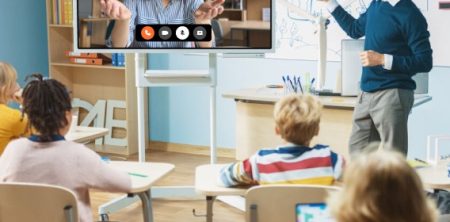The multifaceted role of a skilled teacher includes finding innovative approaches to language development that resonate with young learners. Increasingly, educators recognize that carefully selected kids animated shows offer unique advantages for language acquisition, providing linguistically rich environments that combine visual context, engaging narratives, and natural language patterns. This strategic integration transforms entertainment into valuable literacy experiences that support vocabulary development, comprehension skills, and language confidence.
Linguistic research confirms that children acquire language most effectively through meaningful exposure in contexts that provide clear visual support for unfamiliar terms and concepts. Well-designed animated programming offers precisely this combination—natural dialogue reinforced by expressive character actions and environmental cues that make meaning accessible even when vocabulary stretches beyond a child’s current mastery. Teachers who recognize this alignment can harness children’s entertainment preferences to support academic language development.
For educators working with diverse populations, including English language learners, animation provides particularly valuable instructional support. The combination of simplified language, clear pronunciation, slower speech rates in programs designed for younger viewers, and strong visual context creates optimal conditions for comprehensible input—language that remains accessible despite containing unfamiliar elements. When teachers select episodes strategically and scaffold viewing experiences with pre-teaching of key vocabulary, pause points for clarification, and post-viewing discussion, they maximize these linguistic benefits.
The narrative structure commonly found in children’s animation naturally introduces academic language skills that students will need for reading comprehension. Concepts like character motivation, problem-solution patterns, sequencing, and cause-effect relationships appear repeatedly in animated storytelling. Perceptive teachers help students recognize these narrative elements during viewing experiences, then make explicit connections to similar patterns in written texts, creating bridges between visual and print literacy.
Many animated shows incorporate songs, rhymes, and wordplay that support phonological awareness—the foundation of reading readiness. When teachers highlight these elements through interactive viewing experiences, having students repeat phrases, discuss rhyming patterns, or identify alliteration, they transform entertainment into targeted phonics instruction. The emotional engagement children feel with favorite animated characters enhances motivation for these language-focused activities.
Vocabulary expansion represents one of the most significant benefits of quality animated content. Research indicates that children’s media can introduce up to 20 unfamiliar words in a single episode—words presented in meaningful contexts rather than isolated lists. When teachers preview content to identify tier two vocabulary (sophisticated words that appear across subject areas), then emphasize these terms during viewing and subsequent activities, they accelerate academic vocabulary development crucial for school success.
For developing writers, animation provides accessible models for storytelling structure. Teachers who guide students in analyzing how animated episodes introduce characters, establish settings, develop problems, and create resolutions help children internalize these patterns for their own writing. Many educators extend this learning through writing prompts that invite students to create alternative endings, describe characters’ thoughts during key moments, or imagine new episodes—activities that bridge receptive and productive language skills.
The dialogue featured in animated programming offers authentic models of conversation patterns, including turn-taking, questioning strategies, and appropriate responses. When teachers draw attention to these interaction patterns and provide opportunities for students to role-play similar exchanges, they support pragmatic language development—the social aspects of communication that prove essential for classroom participation and peer relationships.
Cultural expressions embedded in animated content introduce children to language variation, idioms, and colloquialisms they might not encounter in more formal educational materials. This exposure proves particularly valuable for building linguistic flexibility—the ability to comprehend and navigate different registers and dialects within a language. Teachers who help students notice and discuss these variations develop metalinguistic awareness that supports both comprehension and cultural understanding.
Reading motivation increases significantly when children encounter familiar characters and storylines in print materials after experiencing them in animated form. Strategic teachers capitalize on this connection by creating classroom libraries that include books featuring popular animated characters, providing natural motivation for independent reading. This approach proves especially effective with reluctant readers who find confidence in approaching texts about characters and worlds they already understand through visual media.
Assessment opportunities emerge naturally when teachers observe children’s responses to animated content. Students’ ability to predict outcomes, explain character motivations, retell stories sequentially, and connect episodes to personal experiences all provide valuable insights into comprehension skills. These observations help teachers identify both strengths and needs, informing targeted language instruction that addresses individual developmental patterns.
The accessibility of animated content on various platforms enables teachers to suggest specific episodes for home viewing, extending language learning beyond classroom hours. When educators provide families with discussion questions or follow-up activities related to recommended shows, they create continuity between school and home language environments. This partnership approach acknowledges parents as essential collaborators in children’s language development while providing practical strategies families can implement during everyday activities.
As educational animation continues evolving, incorporating interactive elements and customizable features, teachers gain increasingly sophisticated tools for language instruction. The most effective educators approach these resources with intentionality—selecting content that aligns with specific language objectives, mediating viewing experiences to emphasize key learning opportunities, and extending content through related activities that promote language production. Through this thoughtful integration, entertainment transforms into educational experiences that build essential literacy foundations.

